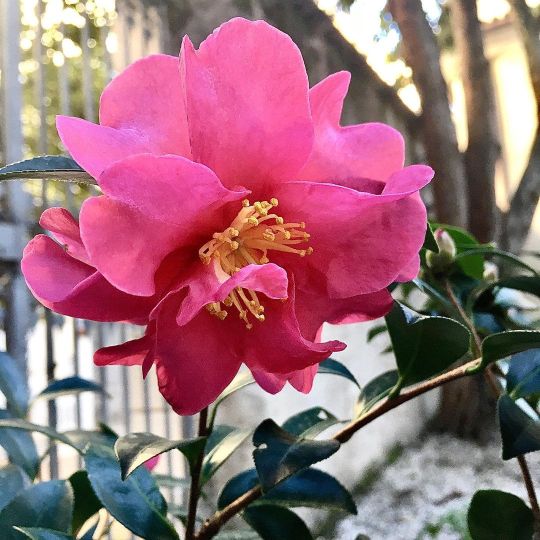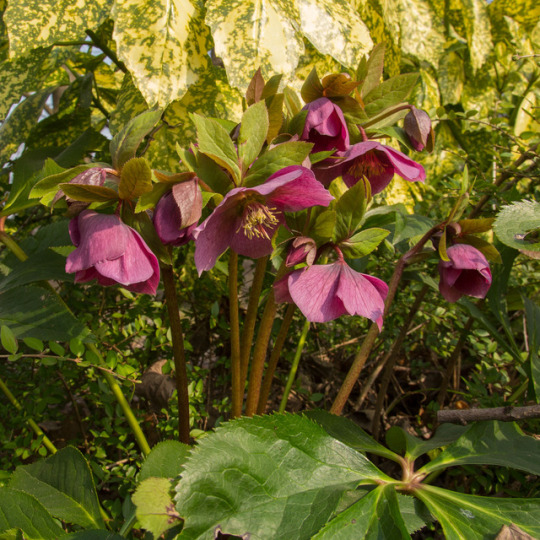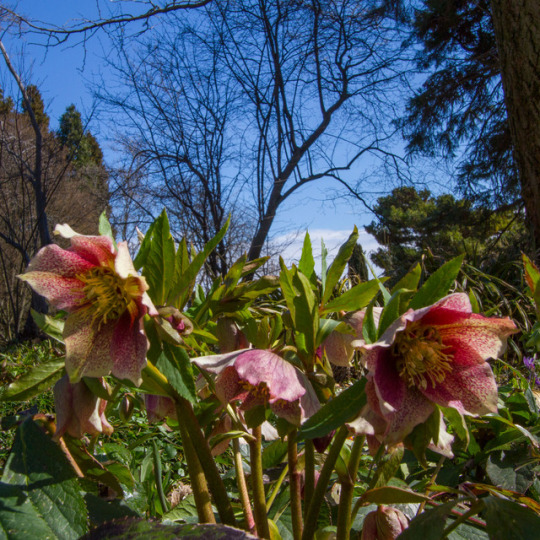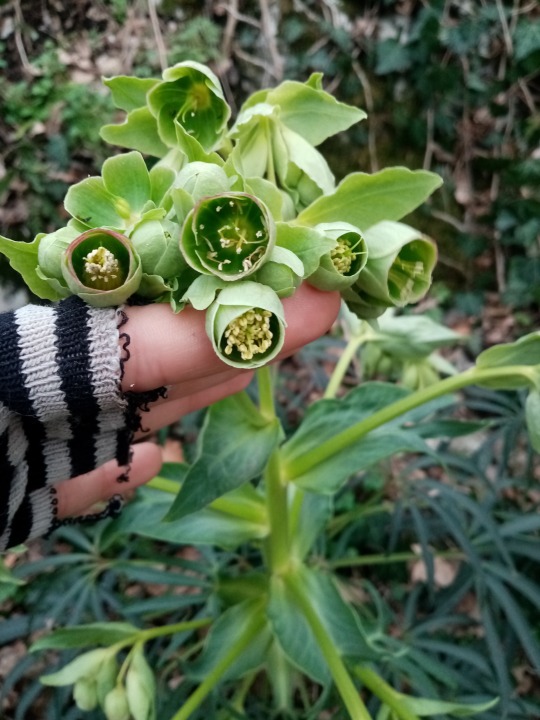#elleborus
Explore tagged Tumblr posts
Text
Herbal/Plant Magic Masterlist
[wip]
I do not personally endorse all these sources, read skeptically and cross-reference at your discretion. These are, however, all sources I personally use, with varying levels of trust.
Herbaria, Herbals, Botanical Books, etc
EARLY MODERN-CONTEMPORARY
New Flora of the British Isles - Clive A. Stace
The Englishman's Flora - George Grigson
Das Buch der Natur - Konrad Megenbergen
Culpeper's Complete Herbal
MEDIEVAL-RENAISSANCE
Het Biënboec van Thomas van Cantimpré en zijn exempelen [Old Dutch] - Wouter Antonie van der Vet
Jacob van Maerlant's Naturen Bloeme
Hildegard Von Bingen's Physica - Priscilla Throop
Pristina Medicamenta: Ancient and Medieval Medical Botany - Jerry Stannard
Florum, et coronariarum odoratarumque nonnullarum herbarum historia - Rembert Dodoens
Nauwkeurige beschrijving der aardgewassen [Old Dutch] - Abraham Munting
Images in color of the botanical/naturalist art of Abraham Munting
Phytognomonica
Rembert Dodoens' Cruijdeboeck
The Grand Albert
CLASSICAL
Theophrastus' Enquiry into Plants | I through V | VI onward
Pliny's Natural History | 1 | 2 | 3 | 4 | 5 | 6 | 7 | 8 | 9 | 10
The Ebers Papyrus
The Medical Features of the Ebers Papyrus - Carl H. von Klein
The Greek Herbal of Dioscorides
Herbal Magic, Using Herbs, Herb Folklore, Flower Language
The Black Toad - Gemma Gary
County Folk-lore - GB Folklore Society
Superstitions of the Highlands and Islands of Scotland
Scottish Folk-lore and Folk Life - Donald MacKenzie
The Anglo-Saxon Charms - Felix Grendon
Compendium of Ritual and Symbolic Plants in Europe - M. Cleene | Dutch Edition
Under the Witching Tree - Corinne Boyer (read skeptically)
Anglo-Saxon Magic - Gofrid Storms
Northern mythology : comprising the principal popular traditions and superstitions of Scandinavia, North Germany, and The Netherlands | 2 | 3
La mythologie des plantes; ou, Les légendes du règne végétal - Angelo de Gubernatis
The Language and Sentiment of Flowers - Anonymous
The Language and Sentiment of Flowers - L.V.
The Illustrated Language of Flowers - Anna Christian Burke
Flora symbolica; or, The language and sentiment of flowers - John H. Ingram
The Natural History of the Bible - H.B. Tristram
Handwörterbuch Des Deutschen Aberglaubens - Baechtold-Staubl, Hoffman-Krayer
Antiker aberglaube in modernen ausstrahlungen - dr. Eduard Stemplinger
Der Baumkultus der Germanen und ihrer Nachbarstämme - Wilhelm Mannhardt
The Folk-Lore of Plants - T.F. Thiselton Dyer (read skeptically)
Practical Magic And the Literary Archaeology of the Pagan Past in Two Anglo-Saxon Charms - Jang
Madness, Medication—and Self-Induced Hallucination? Elleborus (and Woody Nightshade) in Anglo-Saxon England, 700–900 - Hall
Elleborus in Anglo-Saxon England, 900–1100: Tunsingwyrt and Wodewistle - Hall
Folk-healing, Fairies and Witchcraft: The Trial of Stein Maltman, Stirling 1628 - Hall
Online Libraries
Native American Ethnobotany Database
Alaska Native Knowledge Base
The Medieval Garden Enclosed
Monumental Trees
Trees for Life
Ecoliterature, Natural History, Cultural History
Gathering Moss - Robin Wall Kimmerer
Braiding Sweetgrass - Robin Wall Kimmerer
#folk magic#apothecaric allerlei#witchblr#folk witchcraft#animism#witchcraft#green magic#green witchcraft#plants and herbs#herbalism
7 notes
·
View notes
Photo

💛 CAMELLIAS SASANQUA + ELLEBORUS - GIARDINO DI SANT’OSVALDO, ROVERETO, ITALY Buon inzio di settimana! Let’s start the week with a good mood! #giardinodisantosvaldo #garden #camellia #elleborus #pinkandwhite #lovemygarden #flowersandplants #giardiniitaliani #gärten #bloom #blumen #giardinisettecenteschi #giardinitrentini #giardinoitaliano #jardins #flowerpoetry #fiori #santamariadistrettorovereto #santamariadistretto #distrettosantamaria #distrettosantamariarovereto #rigenerarovereto #comunerovereto #visitrovereto @rigenera_rovereto @comunerovereto @visitrovereto @visittrentino @touringclubtrentino @francesconimiriam @parcoguerrierigonzaga (presso Via Santa Maria) https://www.instagram.com/p/ClNrxbeDpmi/?igshid=NGJjMDIxMWI=
#giardinodisantosvaldo#garden#camellia#elleborus#pinkandwhite#lovemygarden#flowersandplants#giardiniitaliani#gärten#bloom#blumen#giardinisettecenteschi#giardinitrentini#giardinoitaliano#jardins#flowerpoetry#fiori#santamariadistrettorovereto#santamariadistretto#distrettosantamaria#distrettosantamariarovereto#rigenerarovereto#comunerovereto#visitrovereto
0 notes
Photo

February is hellebore season at La Macchina Fissa. #elleborus #elleborusorientalis #hellebores #helleboreseason #ruralitaly #lamacchinafissa #woodland #provinciadimantova #parcodelmincio #italiangardens (presso La Macchina Fissa) https://www.instagram.com/p/CLFGEMhFmLU/?igshid=bsohb3cpmlwj
#elleborus#elleborusorientalis#hellebores#helleboreseason#ruralitaly#lamacchinafissa#woodland#provinciadimantova#parcodelmincio#italiangardens
0 notes
Photo




LA ROSA DI NATALE O ELLEBORO Helleborus è un genere appartenente alla famiglia delle Ranunculaceae, chiamato comunemente ELLEBORO ed è originario dell'Europa. Comprende circa 30 specie erbacee perenni (di cui una decina spontanee in Italia), alcune con radici rizomatose. Quasi tutte le varietà di elleboro prediligono un substrato a pH neutro o subacido, possibilmente caratterizzato da una bassa percentuale di calcio. Le rose di Natale si sviluppano naturalmente nel sottobosco e nei prati di montagna, spesso sul greto di piccoli corsi d'acqua stagionali; le piante crescono in ciuffo compatto che può raggiungere i 30 cm di altezza. Le foglie sono persistenti di colore verde scuro e i fiori sono bianchi segnati di rosa o porpora, a volte con macchie verdi al centro. Fioriscono d'inverno o all'inizio della primavera, quando non si trovano nei nostri giardini altri fiori. Gli ellebori in vaso si trovano nei garden in bella vista durante il periodo natalizio, ma è possibile reperirli durante tutto l’anno.
Sono piante che amano il freddo e durante il periodo natalizio bisogna evitare di tenerli in casa; sono piante da mezz'ombra, o da ombra completa nelle zone più calde e prediligono un terreno ben drenato, ricco di humus. Durante il periodo primaverile-estivo richiedono annaffiature regolari, in modo che il terreno sia sempre abbastanza umido.
0 notes
Text
After a very interesting discussion with @mercuryo-cronyco <3, I learn that in Switzerland the plant is also named Pestwurz, probably an Nth confusion with another species, but nevertheless Pestwurz means "pestilence plant", which would be appropriate ; and in the use that one made of it (violent purgative used in the case of poisoning and black humors among other things) ; and in the image that folklore still has of it, in my region (French Alps) its name is still "Wolf-Killer".
I also found (looking for information on another plant) this :
To the hellebore has been attributed since Antiquity the virtue of curing madness : the name of this plant would come from the Semitic helibar (or helebar, or hellebar), which means "remedy against madness".
Two other etymologies are also proposed for hellebore :
- one, rather improbable : hellos, young deer, and bora, food, pasture
- the other, generally accepted, helein, "to kill" and bora, food, that is to say "the food that kills", in reference to the extreme toxicity of the plant, which has been source of serious accidents
-
But the plant is not that toxic if we compare for example with Veratrum Album. Ellebore was a very common name for a lot of strong purgative plants since Antiquity it seems.
------------------------------------------------------------------------------
NOW, a bit of pure herbalism because I'm not sure it's all clear and defined so far:
Purgative : It was a matter of cleansing "vicious" humors, of restoring the body to its purity.
There were of course several kinds of purgatives as well as different forces.
Cathartic (considered the least violent) / Emetic (considered the worst, i.e a vomiting) / Diuretic (i.e Aperitif> basically means a "digestive", so it's a matter of preparing the body to have a good digestion) / Sodoriferous (to sweat)
The Ellebore-> and all the plants related to it were, according to all the research I did, a plant reputed to be a DRASTIC purgative (so reputed to be the most violent for the body; and when the Ancients say "violent", it means that in their various attempts to purge the bodies, a large number ended in the death of the said body.)
Hellebore ‘fetid’.
[Extract from the Dictionary of Medicinal and Poisonous Plants by P.V Fournier.]

- Popular names : Griffin’s foot, lion’s foot, bear’s paw, snake rose, horse-bites, snake bread, …
- Habitat and flowering :
Flowering usually occurs after 4 to 9 years, usually the plant dies after its second flowering. It is umbelliferous, even in the heart of winter. Plant very common in France in calcareous soils, not or hardly ever found in clay soils.
- History :
In antiquity the hellebore played a big role in the treatment of mental and nervous disorders, madness, epilepsy, various paralysis, etc. Dioscorides speaks of its purgative properties (in fact, properties that the wine of vines bordering many feet of Hellebore, received.)
- Poisoning :
helleboreine is a digitalis-type heart poison (…)
Poisoning is manifested by irritation of the mouth and throat, a flow of saliva, heaviness of the head, dizziness, ringing in the ears dilation of the pupils, slowing of the pulse, a feeling of malaise, sometimes fits and convulsions, nausea / stomach pain / diarrhea, difficult breathing, then colds and death from cardiac arrest.
It should be noted that, just as with digitalis, the effects of the toxic principles of Hellebore accumulate, so continued low doses can become fatal.

- Medicinal uses :
1 / It has long been used as a cardiac tonic by decoction of the plant at 1%, but this is no longer used because of its difficult resistance to elimination.
2 / It was used before for melancholy, hypochondria, hysteria, rheumatic crises, intermittent fevers, sores, eschares, etc.
3 / It can be very useful as a purgative and dewormer when it is handled with care. Following the example of the ancients, its leaves can be macerated moderately in vinegar, or simply moisten them with liquor, then extract the juice and mix it with syrup or honey. Thus prepared, it does not cause nausea or vomiting.
4 / In homeopathy, the tincture taken from the dry root, a yellow liquid with a virulent smell and a burning flavor, is indicated in the following cases: psychosis, cerebral congestion, collapse, dropsy, renal congestion, weakness of the heart, etc.
5 / External use is dangerous: applied for a few moments to a bleeding wound, the root immediately causes vomiting.
However, an ointment, composed of 4 to 8g of root for 30g of lard removes the scabs. (which do not leave by other means.)
#Ellebore#Elleborus Foetidus#Poison#Great Old Lady of the Mountains#my dear dear Old Lady of The Mountains <3#Fournier
51 notes
·
View notes